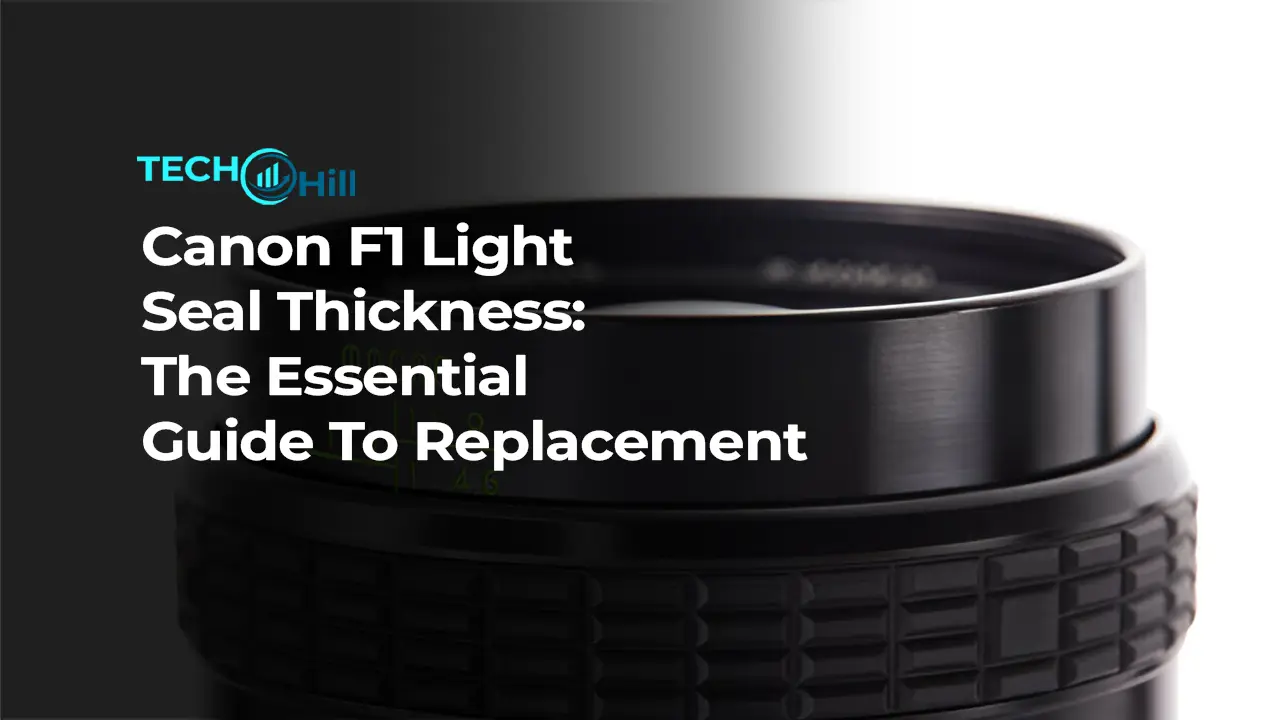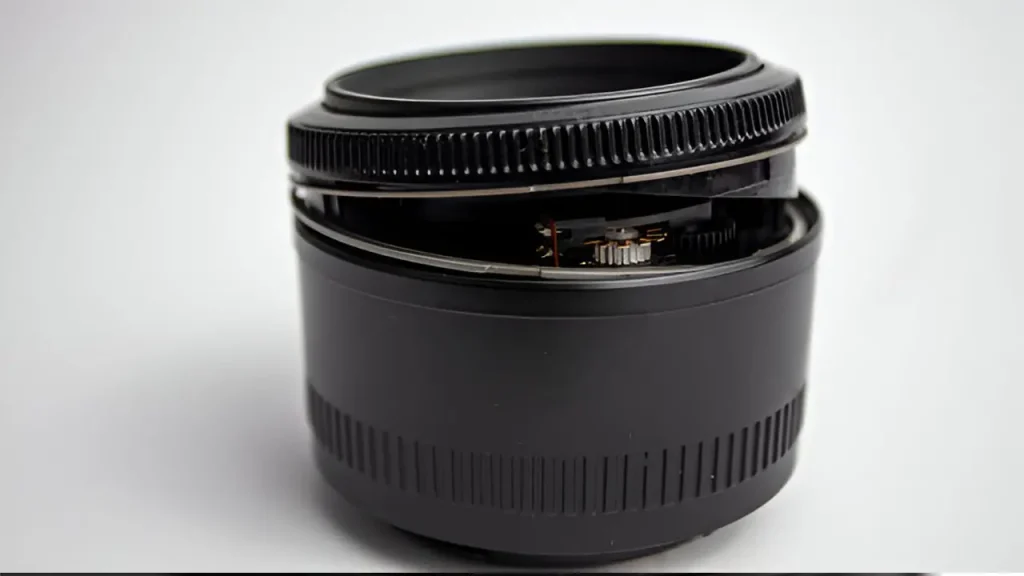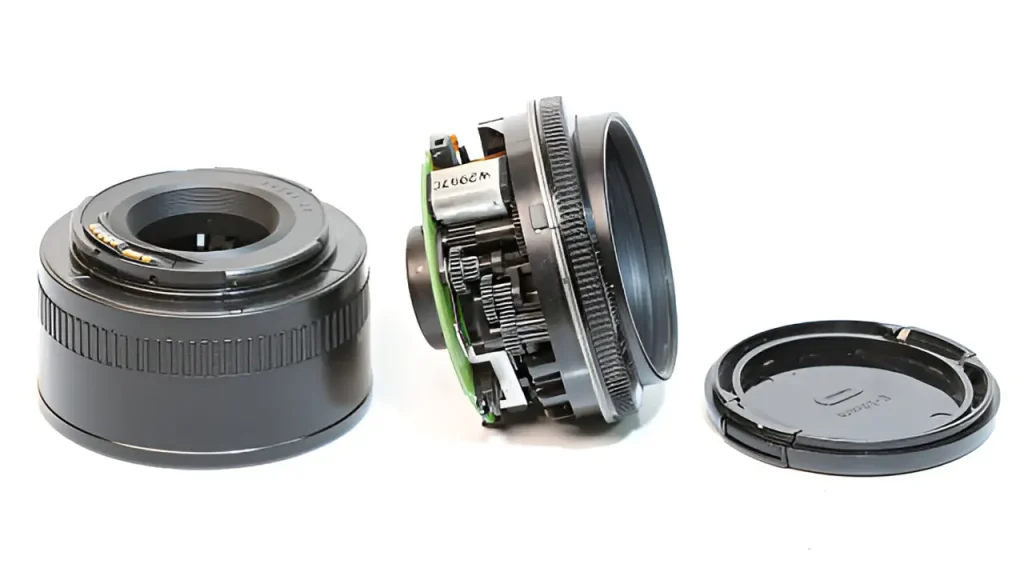Canon F1 Light Seal Thickness: The Essential Guide To Replacement

As a seasoned photographer and film enthusiast, I’ve learned that preserving the integrity of these cameras is not just about nostalgia; it’s about capturing images with the richness and depth that only film can provide. Join me as we explore how the right light seals can prevent light leaks and protect your precious moments, ensuring every shot is as timeless as the camera itself.
The Role of Light Seal Thickness in Cameras
In the world of photography, the smallest components often play pivotal roles in the creation of a perfect image. Light seals, though seldom discussed outside of enthusiast circles, are one such component whose importance cannot be overstated. Primarily found in film cameras like the iconic Canon F1, light seals are critical in ensuring that unwanted light does not infiltrate the camera body, which could ruin an otherwise flawless photograph.
Imagine a scenario where light leaks into a camera: it’s akin to a small crack in a darkened room, where even the tiniest sliver of light can disrupt the ambiance. In photography, this disruption manifests as fogging or streaks across the captured film, an issue particularly detrimental in professional or high-stakes photography settings. Light seals are the unsung heroes in this regard, positioned around the camera’s door, body, and sometimes even around the lens mount, to block any stray light from entering.
The Canon F1, a robust tool favored by many seasoned photographers, relies on these seals to maintain its legendary performance. Over time, however, these seals can degrade—turning sticky, crumbling, or even disintegrating completely. This degradation necessitates a keen understanding of light seal maintenance and replacement—a crucial skill for any photographer devoted to film.
Understanding Light Seal Thickness for Canon F1
When it comes to maintaining a Canon F1, one of the key considerations is the thickness of the light seals. The thickness isn’t just a minor detail—it’s essential for ensuring the camera operates in optimal condition, free from the risk of light leaks. For owners of this classic camera, understanding the specifics of light seal thickness can make the difference between a preserved piece of equipment and one that’s prone to frustrating film fogging.
The original light seals on a Canon F1 typically consist of foam or felt materials, designed precisely to fit the camera’s intricate structure. These seals are usually about 1 to 2 mm thick—thin enough to allow the camera back to close snugly without putting undue pressure on the film, yet thick enough to provide an effective barrier against light. Striking the right balance in seal thickness is crucial; too thin, and light penetrates the film chamber, too thick, and the camera back might not close properly, potentially harming the camera’s mechanics or the film itself.
For the Canon F1, ensuring that replacement light seals match these dimensions is vital. Enthusiasts and professionals often recommend using specific types of foam or felt that compress over time but still provide a resilient seal. When replacing these seals, precision is key. It’s not merely a matter of fitting a strip of foam into a groove; it involves measuring and cutting the material to match the exact specifications required by the camera’s design.
Materials Used in Light Seals
The choice of material for light seals in cameras like the Canon F1 is as critical as the thickness of the seals themselves. Over the years, the materials used have evolved, but the purpose remains the same—to prevent light from entering the film chamber and affecting the film.

Originally, most light seals were made from a type of foam rubber or felt. These materials were chosen for their ability to compress and expand, filling any gaps that might allow light to pass through. Foam rubber, particularly popular for its initial resilience and ease of installation, can unfortunately degrade over time; it can become sticky and crumble away, leaving residue that can interfere with the camera’s operation.
Felt is another traditional material, prized for its durability and less prone to disintegration compared to foam. Felt seals are thicker and denser, providing a robust barrier against light. However, their lack of compressibility compared to foam can make camera operation slightly stiffer, particularly when closing the camera back.
In modern replacements, newer materials such as neoprene and silicone have become popular. These materials offer superior longevity and resilience against environmental factors like temperature changes and humidity. Neoprene, for instance, maintains its elasticity and structural integrity better than traditional foam, making it an excellent choice for a light seal. Silicone, though less commonly used, offers the highest durability and resistance to chemicals and temperatures, ensuring the light seal performs well over many years.
For Canon F1 owners, selecting the right material involves balancing the original design specifications with the advantages of modern materials. While purists might prefer materials that closely match the original specifications, those looking for longevity and less frequent replacements may opt for modern alternatives like neoprene. Understanding these material choices helps ensure that the camera remains light-tight and functional, preserving the quality of every shot taken.
How to Measure and Replace Light Seals for Canon F1
Replacing light seals in a Canon F1 requires precision and patience, but with the right approach, it can be a straightforward DIY task that restores the camera to its optimal performance. Here’s a step-by-step guide on how to measure and replace the light seals in this classic camera:

Step 1: Assess the Condition and Remove Old Seals
Before anything, assess the condition of the existing light seals. If they are sticky, crumbling, or visibly deteriorating, it’s time for a replacement. Carefully remove the old seals using a pair of tweezers and a small flathead screwdriver. For any residue left in the grooves or on the camera surface, gently clean it off with isopropyl alcohol and a cotton swab. Be meticulous to avoid any damage to the camera body.
Step 2: Measure the Grooves for New Seals
Using a precision ruler or a digital caliper, measure the grooves where the light seals fit. For the Canon F1, focus on three main areas: the mirror damper, the door hinge, and the door channel. Record the lengths and widths. It’s crucial to measure the depth of the groove as well to determine the thickness of the foam or felt needed.
Step 3: Cut the New Seals
Based on your measurements, cut the new seals from your chosen material—foam, felt, neoprene, or silicone. Use sharp scissors or a hobby knife for foam and felt to ensure clean, straight edges. For neoprene and silicone, which might be tougher, a hobby knife is more suitable. Cut slightly longer pieces than needed; you can trim any excess later.
Step 4: Install the New Seals
Start by fitting the seals into the less complex areas to practice the technique. Peel off any backing if using self-adhesive foam or apply a thin layer of contact adhesive to both the seal and the groove (allow it to become tacky before fitting). Press the seals firmly into the grooves, ensuring they are snug and even. For non-adhesive materials, you might need to apply small dabs of adhesive at intervals to hold the seals in place.
Step 5: Check the Fit and Function
Once all seals are in place, gently close the camera back to check for proper fit without forcing it. There should be no bulging or resistance that might stress the camera body. Open the back and trim any excess material if needed.
Step 6: Final Testing
After replacing the seals, it’s advisable to perform a light leak test before loading a new film roll. Place the camera in a bright environment with the back closed and without film. After a few minutes, open the camera in a darkroom or dimly lit area to check for any signs of light penetration.
Where to Source Replacement Light Seals
Finding the right replacement light seals for a Canon F1 can be as crucial as knowing how to install them. Fortunately, there are several options available for sourcing these essential parts, whether you’re looking for original-like materials or modern alternatives that offer enhanced durability.
Specialty Photography Shops
Many camera repair and photography specialty shops carry a range of products for camera maintenance, including light seals. These stores often offer the advantage of staff who can provide expert advice on the best materials for your specific model and needs.
Online Retailers
The internet is a vast resource for camera parts. Websites like eBay, Amazon, and specialty online stores dedicated to film photography and camera repair parts often have comprehensive listings for light seal kits. These kits typically come with pre-cut seals or strips you can cut to size, and sometimes include the necessary tools and adhesives.
Custom Light Seal Providers
There are also vendors that specialize in custom light seals for vintage cameras. These providers can offer kits tailored to specific models like the Canon F1. These kits are designed to match the exact specifications and material composition needed for optimal performance, and they often come with detailed instructions to aid in DIY replacement.
DIY Materials
If you prefer a hands-on approach or cannot find a pre-made kit, you can source the raw materials yourself. Craft stores or industrial supply outlets may carry suitable types of foam, felt, neoprene, or silicone. This option allows you to cut the materials to your exact specifications, though it requires more effort and precision on your part.
Forums and Communities
Photography forums and online communities can be invaluable resources for finding out where to source light seals. Experienced photographers and hobbyists often share their preferred vendors and tips for replacing light seals in vintage cameras. Additionally, these communities can be great for finding recommendations for reliable vendors who may not be widely known outside enthusiast circles.
Conclusion
the right thickness and material of light seals are paramount in preserving the performance of your Canon F1. Whether you opt for traditional foams, durable felts, or modern synthetics like neoprene, ensuring a proper fit without light leaks will elevate your photography. Careful maintenance and timely replacement of these seals protect the integrity of every frame you capture.
